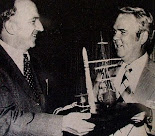Published by Tom Dispatch
On the relatively rare occasions when the media turns its attention to U.S. weapons sales abroad and shines its not-so-bright spotlight on the latest set of facts and figures, it invariably speaks of “the global arms trade.”
Let’s consider that label for a moment, word by word:
*It is global, since there are few places on the planet that lie beyond the reach of the weapons industry.
*Arms sounds so old-fashioned and anodyne when what we’re talking about is advanced technology designed to kill and maim.
*And trade suggests a give and take among many parties when, if we’re looking at the figures for that “trade” in a clear-eyed way, there is really just one seller and so many buyers.
How about updating it this way: “the global weapons monopoly.”
In 2008, according to an authoritative report from the Congressional Research Service (CRS), $55.2 billion in weapons deals were concluded worldwide. Of that total, the United States was responsible for $37.8 billion in weapons sales agreements, or 68.4% of the total “trade.” Some of these agreements were long-term ones and did not result in 2008 deliveries of weapons systems, but these latest figures are a good gauge of the global appetite for weapons. It doesn’t take a PhD in economics to recognize that, when one nation accounts for nearly 70% of weapons sales, the term “global arms trade” doesn’t quite cut it.
Consider the “competition” and reality comes into focus. Take a guess on which country is the number two weapons exporter on the planet: China? Russia? No, Italy, with a relatively paltry $3.7 billion in agreements with other countries or just 9% of the U.S. market share. Russia, that former Cold War superpower in the “trade,” was close behind Italy, with only $3.5 billion in arms agreements.
U.S. weapons manufacturers have come a long way, baby, since those Cold War days when the United States really did have a major competitor. For instance, the Congressional Research Service’s data for 1990, the last year of the Soviet Union’s existence, shows global weapons sales totaling $32.7 billion, with the United States accounting for $12.1 billion of that or 37% of the market. For its part, the Soviet Union was responsible for a competitive $10.7 billion in deals inked that year. France, China, and the United Kingdom accounted for most of the rest.
Since then, the global appetite for weapons has only grown more voracious, while the number of purveyors has shrunk to the point where the Pentagon could hang out a sign: “We arm the world.” No kidding, it’s true.
Cambodia ($304,000), Comoros ($895,000), Colombia ($256 million), Guinea ($200,000), Greece ($225 million), Great Britain ($1.1 billion), the Philippines ($72.9 million), Poland ($79.8 million), and Peru ($16.4 million) all buy U.S. arms, as does almost every country not in that list. U.S. weapons, and only U.S. weapons, are coveted by presidents and prime ministers, generals and strongmen.
From the Pentagon’s own data (which differs from that in the CRS report), here are the top ten nations which made Foreign Military Sales agreements with the Pentagon, and so with U.S. weapons makers, in 2008:
Saudi Arabia $6.06 billion
Iraq $2.50 billion
Morocco $2.41 billion
Egypt $2.31 billion
Israel $1.32 billion
Australia $1.13 billion
South Korea $1.12 billion
Great Britain $1.10 billion
India $1 billion
Japan $840 million
That’s more than $17 billion in weapons right there. Some of these countries are consistently eager buyers, and some are not. Morocco, for example, is only in that top-ten list because it was green-lighted to buy 24 of Lockheed Martin’s F-16 fighter planes at $360 million (or so) for each aircraft, an expensive one-shot deal. On the other hand, Saudi Arabia (which inked $14.71 billion in weapons agreements between 2001 and 2008), Egypt ($13.25 billion) and Israel ($11.27 billion) are such regular customers that they should have the equivalent of one of those “buy 10, get the 11th free” punch cards doled out by your favorite coffee shop.
To sum up, the U.S. has a virtual global monopoly on exporting tools of force and destruction. Call it market saturation. Call it anything you like, just not the “global arms trade.”
Getting Even More Competitive?
It used to be that the United States exported goods, products, and machinery of all sorts in prodigious quantities: cars and trucks, steel and computers, and high-tech gizmos. But those days are largely over.
The Obama administration now wants to launch a green manufacturing revolution in the U.S., and in February, Commerce Secretary Gary Locke announced a new “National Export Initiative” with the aim of doubling American exports, a move he said would support the creation of two million new jobs. The U.S. could, of course, lose the renewable-energy race to China and that new exports program may never get off the ground. In one area, however, the U.S. is manufacturing products that are distinctly wanted -- things that go boom in the night -- and there the Pentagon is working hard to increase market share.
Don’t for a second think that the American global monopoly on weapons sales is accidental or unintentional. The constant and lucrative growth of this market for U.S. weapons makers has been ensured by shrewd strategic planning. Washington is constantly thinking of new and inventive ways to flog its deadly wares throughout the world. ...











